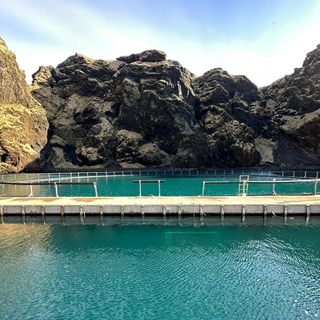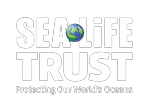
- Home
- What We Do
- News
- 2023
- New Sanctuary Standards Herald Sea Change for Captive Whales and Dolphins
New Sanctuary Standards Herald Sea Change for Captive Whales and Dolphins
28/06/2023 08:37:13
The Global Federation of Animal Sanctuaries (GFAS) has published the first ever set of best practices for cetacean (whales and dolphins) sanctuaries.
“These guidelines were established through the combined efforts of top cetacean experts,” said Valerie Taylor, executive director of GFAS, which is the only globally recognized organization providing standards for identifying legitimate animal sanctuaries. “They signal a defining moment for the future of captive cetaceans across the globe.”
Standards for sanctuaries that care for land animals – including elephants, great apes and big cats – have been in place for many years. And now, as public opinion demands an end to keeping whales and dolphins in concrete tanks for the purposes of entertainment, coastal sanctuaries are being established for their retirement.
The new guidelines are the product of a pioneering collaboration between the SEA LIFE TRUST, Merlin Entertainments, The Whale Sanctuary Project and the National Aquarium.
“Like all authentic sanctuaries,” Taylor said, “these ocean havens will be ‘Cetacean Welfare First,’ meaning that the animals’ wellbeing, rather than visitor experience or company profit, will always be the priority in animal care, sanctuary design and overall operations.”
Rob Hicks, Global Director of Animal Welfare at Merlin Entertainments, has worked on the collaboration between GFAS, the Whale Sanctuary Project and National Aquarium and was one of the leading founders of the creation of the SEA LIFE TRUST Beluga Whale Sanctuary.
Commenting on the partnership, Rob said: “As the team responsible for the world’s first beluga whale sanctuary, we have seen first-hand the gargantuan effort, cost and sheer amount of care and passion that these sanctuaries take to create and beyond that, to maintain. They are years in the making and need to be supported and run by a whole network of amazing and dedicated people. The SEA LIFE TRUST Beluga Whale Sanctuary was initially designed for Little Grey and Little White, the two belugas who previously performed in China and were transported in 2019 to the sanctuary, which is situated off the south coast of Iceland.”
He added: “Everything we have done has always been about putting Little Grey and Little White’s welfare first and we hope that other beluga whales will join them in the future. We were delighted to support GFAS in setting out this robust framework for what other sanctuaries in the future should look like, as well as the high standards we set ourselves on the daily basis. We very much welcome these new standards and see them as just as pioneering as our own welfare project.”
Dr. Lori Marino is President and co-Founder of the Whale Sanctuary Project, which is creating a sanctuary in Nova Scotia for captive orcas and beluga whales. “Sanctuaries are one of the most important ways we can make reparations to these intelligent, beautiful animals for decades of exploitation,” she said. ”We are honored to be working with other experts and scientists who share the vision of a world in which no dolphins or whales are used for entertainment but are treated with the respect they deserve.
In 2016, John Racanelli, President and CEO of the National Aquarium, announced the aquarium’s intention to move the dolphins in its care to an oceanside sanctuary. In its endeavor to create North America’s first dolphin sanctuary, the aquarium forged relationships with other leaders in the cetacean industry, including SEA LIFE TRUST and the Whale Sanctuary Project. “As we embarked on this ground-breaking work,” he said, “we quickly determined this was about more than our dolphins alone; it concerned all captive cetaceans. So, it was imperative that we work with other experts in the field to outline the places, principles and practices that would define authentic cetacean sanctuaries. We have a duty to the animals in our care to ensure that when they move, it is to a new home designed around their social, physical and emotional needs, one that comes as close as possible to their native habitat.”
To be awarded GFAS accreditation, an organization must meet rigorous and peer-reviewed animal care standards that are confirmed by a site visit. They must also adhere to ethical and operational principles such as no breeding, no performances and freedom of choice for the animals. GFAS Accreditation provides a clear and trusted means for the public, donors and grantors to recognize awarded groups as exceptional organizations and true sanctuaries.
